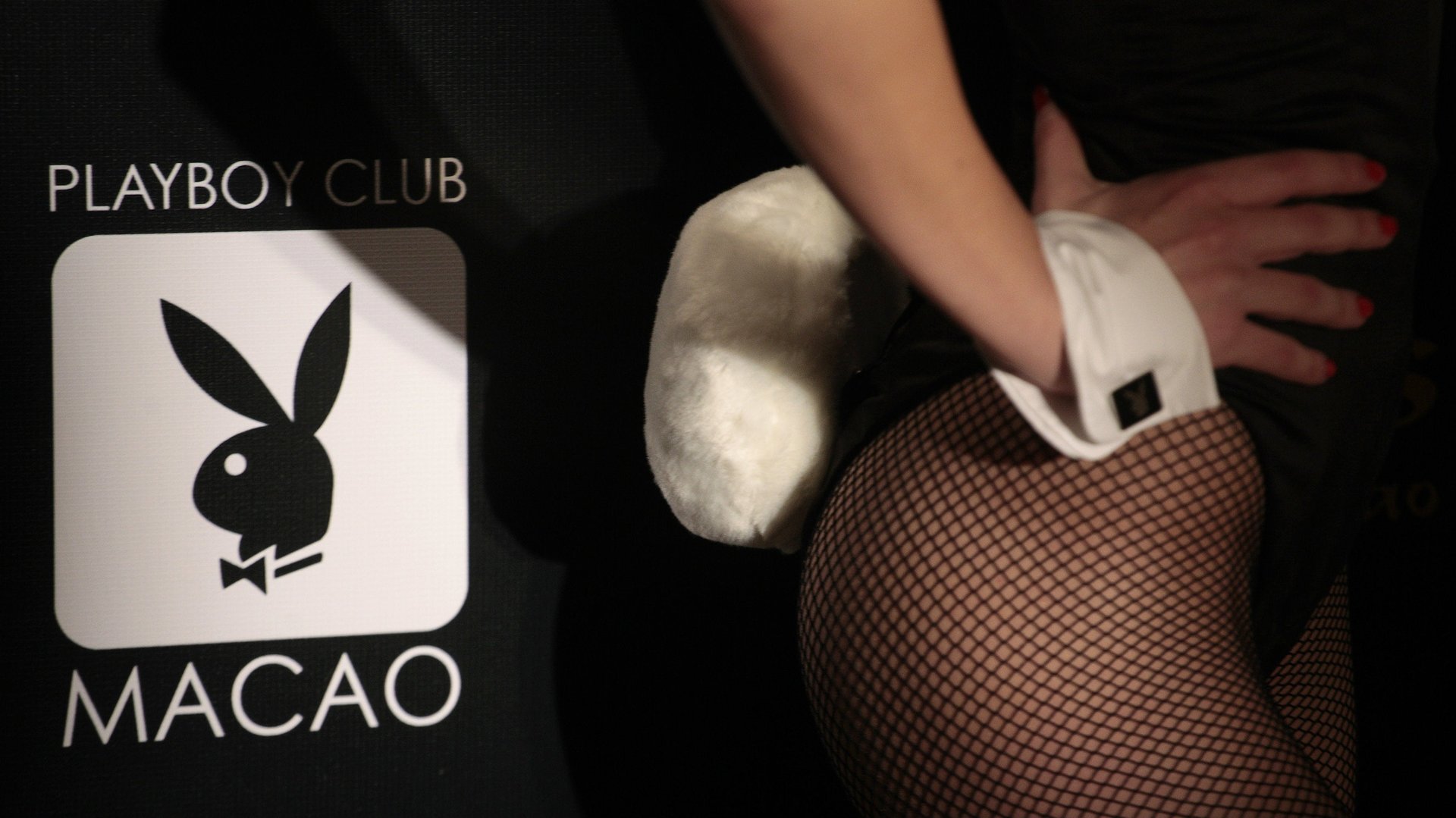RIP the Playboy era of American sexuality
When Playboy announced that it would stop printing nudes, there was no national mourning for the 62-year-old pornographic staple. Several publications argued that Playboy was brought down by the proliferation of online porn, which makes the monthly photo seem irrelevant against the pornographic backdrop of the internet.


When Playboy announced that it would stop printing nudes, there was no national mourning for the 62-year-old pornographic staple. Several publications argued that Playboy was brought down by the proliferation of online porn, which makes the monthly photo seem irrelevant against the pornographic backdrop of the internet.
But the story of America’s relationship to pornography isn’t as straightforward as an increasingly explicit transition from Playboy to online videos. And the six decades of Playboy mark a distinct era that have helped shape American cultural attitudes to sexuality.
David Schmid, English professor at Buffalo University with a focus on popular culture, argues that Playboy both symbolized and enabled the post-war sexual revolution in America.
Playboy was first published in December 1953, five years after the Kinsey Report on male sexual behaviour and just three months after the report on female sexuality. Schmid tells Quartz that these publications were critical for Playboy:
The Kinsey reports were so shocking because they exploded the idea that Americans were sexually conservative and extremely puritanical. That realization had to happen before Playboy could become a cultural phenomenon. Without Kinsey there would have been no Playboy.
Playboy was a public enactment of the sexually open morals depicted in the Kinsey report. But there was (and still is) a gap between the image of American sexuality and the reality, and Schmid says that Playboy was symptomatic of this “schizophrenic” attitude.
“Even though people felt they had to apologize for reading it and may not have wanted to be seen reading it on the bus or plane, it was mainstream in a way that nothing like that had been mainstream before. It brought sexuality and conversations about sexuality into the public domain, in a way that’s similar to Kinsey but also much bigger and on a more public scale,” he says.
Though claiming to read Playboy “for the articles” is often laughingly dismissed, the magazine prints both pornographic images and excellent journalism. As Mireille Miller-Young, associate professor of feminist studies at the University of California notes in the Washington Post, Playboy blended the political and the sexual. And when it was first launched, Playboy appealed to high-end readers who were both sophisticated and philanderers.
“They created the concept of the ‘swinging bachelor’,” Brenda Marston, curator of Cornell’s human sexuality collection at Cornell University tells Quartz. “James Bond and other cultural figures added to the concept, but Playboy really defined it.”
In order to reinforce their brand, Playboy never varied their depiction of nudes. And so Playboy pornography has become a recognizable trope.
In the book Trash Culture: Popular Culture and the Great Tradition, Richard Keller Simon takes the somewhat extreme view that Playboy photos are comparable to Renaissance nudes. Both are faithful to real appearances but also idealizations, turning individual women into a distinctive “type”, he writes.
“Botticelli’s famous nude, the Birth of Venus, serves as the model for the cover of the March 1984 issue of Playboy, which shows a sexy young woman with long hair flowing over her body, her hands covering her genitalia,” adds Keller Simon.
Though Playboy’s photos certainly don’t have the same artistic value as Renaissance paintings, they are a distinctive way of depicting naked women. And precisely because they were once so fashionable, they now look distinctively unfashionable.
Schmid says that American culture has become more sexually open over the decades, and so Playboy’s photos now seem quaint.
“There’s still a cultural pretense that we’re sexually conservative but I think everyone now realizes that it is a pretense. We’re more comfortable acknowledging the disconnect between image and reality, but we feel the need to maintain it,” he says.
But Marston argues that, though Playboy porn is no longer risqué, mainstream culture has become more sexually conservative. After all, online porn is both more explicit and more hidden than the Playboy pornography sold in newsstands.
“Sub-cultures are more sexually explicit and are flourishing, but this is not the era of sexual liberation. It’s much more sexually conservative era in mainstream culture,” she says. “There’s a lot of graphic porn but sex education, for example, is much more restrictive. There’s a push to focus on abstinence-only sex education and there’s much less discussion about sexual pleasure.”
Playboy pornography is an undeniably sexist portrayal of women and few would dispute that it’s time to let the out-dated tradition die. But the magazine was an important step in America’s sexual revolution and it’s unclear that we’ve progressed to a healthier sexual environment. Playboy’s pornography may be gone, but its influence won’t be forgotten so quickly.